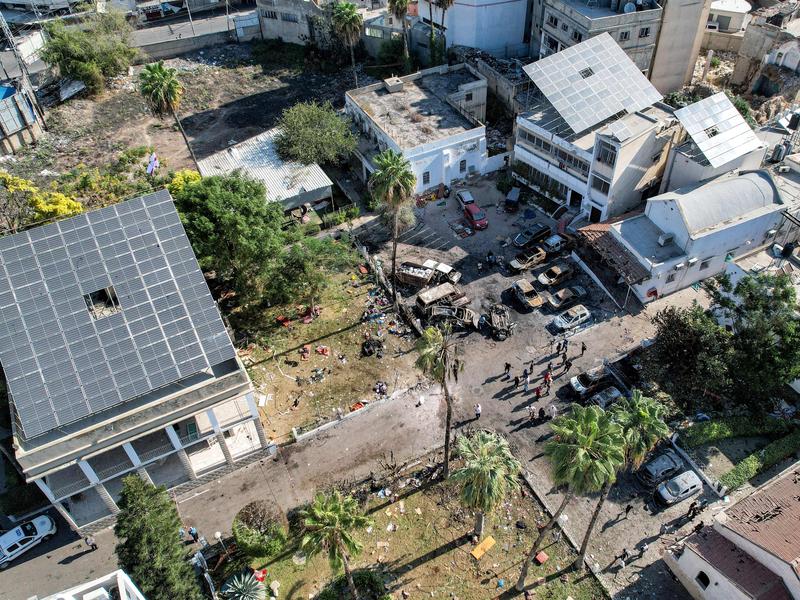Questions still swirl around Al Ahli Arab Hospital blast in Gaza. Here's what we know

The blast that killed hundreds last week at a hospital in Gaza continues to be a topic of hot debate online.
But experts are increasingly doubtful that the publicly available evidence will be enough to settle the question of who was behind the incident.
"I don't think the question will ever get fully resolved using open source intelligence," says Andres Gannon, an assistant professor of political science at Vanderbilt University.
Hundreds of Palestinians were sheltering in the courtyard of Al Ahli Arab Hospital on Tuesday, believing the Christian-run facility would be a safe haven.
Just before 7 p.m. local time, militants began firing a barrage of rockets from a site west of the hospital, according to independent footage of the event.
Moments later there was a terrible explosion at the site. Hundreds were killed, according to eyewitnesses and statements from the Hamas-run Ministry of Health in Gaza.
Hamas quickly claimed, without presenting evidence, that it was an Israeli airstrike. The Israel Defense Forces said it was a failed militant rocket that fell short of its intended target.
But publicly available evidence presents problems for both versions of the story.
Many experts, including Gannon, agree that the visual evidence doesn't support a standard Israeli airstrike. Those strikes typically leave large craters, damage structures and spread shrapnel over a large area. Hamas has said they have yet to find physical evidence at the site, which investigators say would normally be there.
But the Israeli account that it was a failed rocket also has problems.
Israel says the rockets came from the west, and independent video evidence supports that.
But in the video closest to the blast, there's the sound of something whizzing by. That sound is marked by the Doppler effect, which can be heard in the rise and fall in pitch as something moves toward an observer and then away from them.
An nongovernmental organization called Earshot, which conducts "sonic investigations," analyzed that sound. Earshot found that whatever fell very likely came from the east, not the west.
"We're saying that this is reducing the probability of this coming from the west," says Earshot director Lawrence Abu Hamdan. "It's rocket science after all, so we can't rule it out."
A misfired rocket could have changed direction, but Israeli officials have yet to explain the unusual flight path.
Abu Hamdan says it will take time and careful work to put together a coherent explanation for the hospital blast.
"No one strand of evidence will tell the story here," he says.
Others say that the publicly available evidence, as it stands, is unlikely to give a definitive answer. Because the incident happened at night in an active war zone, the available video just might not be enough, says Marc Garlasco, a former United Nations war crimes investigator.
Garlasco worries that, in the absence of fresh evidence, the ongoing debate around the event is counterproductive.
"I totally get why people are concerned about this," he says. "It was a horrible thing, but man — there's been a lot of people killed since that incident, right?"
He hopes the U.N. can eventually conduct a war crimes investigation to establish who was behind the explosion. For now, other issues are in urgent need of public attention, he says. "U.N. facilities are being hit, hospitals are out of fuel — there's a lot to worry about."
A version of this story originally appeared in our digital live coverage of the war.
9(MDEwODYxNTQyMDEzNjAxODk2Nzc2NzNmYQ001))